Colin's Journal: A place for thoughts about politics, software, and daily life.
August 21st, 2005
Bluetooth power
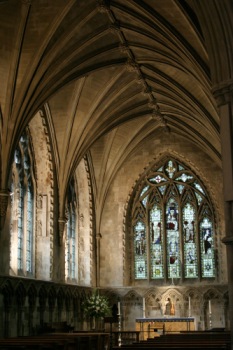 I recently bought a Jabra 250v bluetooth headset for use with my mobile phone. For the last few days I’ve been frustrated with the very poor battery life that both the headset, and my phone (Sony Ericsson T610) have shown. Today I finally figured out what the problem was, and I’m sure others have made the same mistake.
I recently bought a Jabra 250v bluetooth headset for use with my mobile phone. For the last few days I’ve been frustrated with the very poor battery life that both the headset, and my phone (Sony Ericsson T610) have shown. Today I finally figured out what the problem was, and I’m sure others have made the same mistake.
After pairing my headset with the phone I selected the headset and then “Connect” to establish the link between them. This was my mistake! After pairing the phone will automatically make the connection to the headset when an incoming or outgoing call is made. When a call comes in you can answer by pressing the headset button, or by using the phone and then pressing the headset button during the call to transfer to the handsfree. When you make a call the phone automatically establishes the connection to the headset if it is in range.
By manually selecting “Connect” for the headset I was using the headset like it was in one long continuous phone call, hence leading to a very short “standby” battery life on both the headset and the phone.
In other respects I’ve been very happy with the Jabra 250v. It’s light, much more stylish than most of the competition, and fits comfortably despite my glasses. Now that I’ve figured out the battery life problem I can get on with enjoying the benefits of it.
I’m sure others have made the same mistake with bluetooth headsets. Hopefully this post will save someone, somewhere, the same puzzlement over the battery life.
The photo is of St. Albans Cathedral.
August 9th, 2005
Bits and bobs
 Living in London means I make great use of TFL’s Journey Planner. Although typing in street and station names on a mobile phone is a time consuming exercise, I’ve even had the need to use their WAP based version while out and about. Today I added their Java mobile tube map to my phone. While it’s slow to start on a T610 (nearly a minute!), it’s a useful addition for when you have no phone signal or just want to see the tube map. What I really need however is a mobile London street map. Even one that just allowed searches and didn’t know where I was would be a great boon.
Living in London means I make great use of TFL’s Journey Planner. Although typing in street and station names on a mobile phone is a time consuming exercise, I’ve even had the need to use their WAP based version while out and about. Today I added their Java mobile tube map to my phone. While it’s slow to start on a T610 (nearly a minute!), it’s a useful addition for when you have no phone signal or just want to see the tube map. What I really need however is a mobile London street map. Even one that just allowed searches and didn’t know where I was would be a great boon.
On Sunday I went skating in Hyde Park. Although there were more people milling around than on the Toronto water front, the paths are generally wider and easier to skate on. There were a lot of other skaters around, including a whole group dancing on skates – very impressive. I’m happy to report that my skating skills haven’t deteriorated much in the year or more since I last used them. That’s doesn’t say much though, and my stamina is terrible.
I’ve released a new version of SimpleTAL, the first since February. There’s been a few patches building up that I wanted to get out, and it was about time I implemented Iterator support.
Even without a functioning synchronisation program for my laptop, backing up my phone is still very easy. Just send the whole phone book via bluetooth, and then import it into Evolution so that I’ve got a copy of everyone’s number. It would still be nicer to have synchronisation with the individuals contact details, but I’ve never managed to get that working.
The photo is an old one, taken in a city far far away.
July 10th, 2005
Mobile Virtual Network Operators
Yesterday I had to get a phone for Shana, entailing a shopping trip around Tottenham Court Road. I had decided to get a phone on the same network I use (Orange) in order to lower costs when calling each other. Orange’s selection of pre-pay phones, however, is small and dated. I considered moving to a contract in order to get a better phone, but their costs are high (minimum of £19 per month) and don’t offer much discount to the cost of their better phones.
Virgin on the other hand have a good selection of modern phones, all at reasonable prices. Their call rates are generally lower than Orange, especially for texting (3p between Virgin phones, 12p between Orange phones). It quickly became obvious that getting a phone on Virgin made the most sense – and that’s exactly what I did.
 I had already bought a Virgin phone back at Christmas, but was using my old pre-Toronto Orange SIM. With Shana on Virgin it made sense for me to move to the same network, so I called up Orange for my PAC to allow my existing number to be moved to Virgin. When I called Virgin their porting team were busy, so they offered to call me back as soon as they were available, which they did just 10 minutes later. I get to keep my existing number and take advantage of lower call rates – exactly what number portability was intended to provide.
I had already bought a Virgin phone back at Christmas, but was using my old pre-Toronto Orange SIM. With Shana on Virgin it made sense for me to move to the same network, so I called up Orange for my PAC to allow my existing number to be moved to Virgin. When I called Virgin their porting team were busy, so they offered to call me back as soon as they were available, which they did just 10 minutes later. I get to keep my existing number and take advantage of lower call rates – exactly what number portability was intended to provide.
Some in the telecommunications industry underestimate the significance of MVNOs like Virgin. The argument runs that, as these companies own no network capacity, they are essentially just marketing companies who’s only asset is their brand.
This analysis ignores two other value propositions that MVNOs have access to. Firstly MVNOs are buying capacity from ordinary mobile providers in large volumes, and so they have tremendous pricing power. When a with-network mobile provider needs to reduce costs they have to do this the hard way – streamlining their OSS systems and processes, putting pressure on their network kit vendors, etc. An MVNO has an easier task, they simply shop around to the other network providers and through this negotiate lower rates.
The second source of value for an MVNO is customer service. Once network access is secured and their operating prices set, the only way for them to increase margins is to improve operational effectiveness. With no network to run, all their management effort can be spent on improving customer service.
My move to Virgin isn’t driven by their marketing or brand. They offer better phones, lower call prices, and good service. Dismissing the MVNOs as marketing shells is a mistake.
Photo taken on a recent walk around Silverdale, Lancashire.
June 19th, 2005
Hot spam
It’s a hot day here in London. The sun has set and the cool night air should be helping, but it’s still 29C outside. The rest of the week doesn’t look like being any cooler, with the daily temperatures significantly above the historic 20.2C average high for June. Conditions like this make me miss the air conditioning we had in Toronto.

Evolution’s integration with SpamAssassin makes flagging email as spam exceptionally easy. The default configuration does leave something to be desired however. When a user flags an email as being spam they expect future emails with the same content to be automatically moved to the junk mail folder. The default SpamAssassin rules require a spam score of 5 before an email is flagged as being spam, and the bayes rule (which learns what content counts as spam) alone isn’t enough to give such a score. To solve this I’ve increased the score that the bayes rule gives for email it calculates as being almost certainly spam, by putting the following rule into the .spamassassin/user_prefs file:
score BAYES_95 0 0 4.514 4.514
score BAYES_99 0 0 5.000 5.000
Hopefully this will lead to a significant drop in the amount of junk email that I have to flag manually each day.
The picture is of a fountain in Kensington Gardens, taken a week ago.
May 25th, 2005
UK House Prices
The UK housing market is a strange beast these days. The price of property has soared across the country, reducing the opportunity of those on an average wage to buy somewhere to live. Partly this is the result of a long term trend: the increasing numbers of people living alone driving up the need for more property. Those that do buy houses are now paying 4.5 times their average income for them, compared to an average of 3.2 between 1986 and 2000 (source: OPDM Housing Stats) .
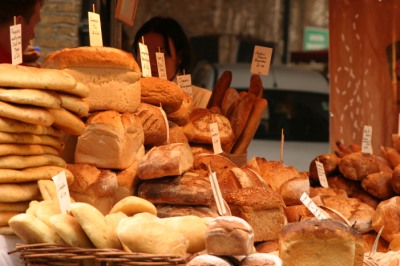 With first time buyers unable to afford even a tiny house the government is floating various plans to try and address the problem. The latest of these involves the government buying a part share in a house alongside the individual, so reducing the cost for first time buyers. How anyone expects pumping more money into the property market and increasing the number of buyers will lead to house prices becoming more affordable is beyond me. There are only two ways to make housing more affordable: either choke off demand and burst the current asset buble by increasing interest rates (something the Bank of England is slowly doing) or by build a large number of new houses.
With first time buyers unable to afford even a tiny house the government is floating various plans to try and address the problem. The latest of these involves the government buying a part share in a house alongside the individual, so reducing the cost for first time buyers. How anyone expects pumping more money into the property market and increasing the number of buyers will lead to house prices becoming more affordable is beyond me. There are only two ways to make housing more affordable: either choke off demand and burst the current asset buble by increasing interest rates (something the Bank of England is slowly doing) or by build a large number of new houses.
The government has taken the longest period of sustained growth in history, added in steadily increasing taxation and still manages to run a defecit of £35.8 billion (over 3% of GDP). Under such circumstances we should be cutting expenditure, not dreaming up new wasteful and market distorting subsidies.
Photo: Bread for sale at the Borough Market.
May 2nd, 2005
Back from February
Returning to London’s weather after a week spent time-travelling to February is a pleasant relief. Toronto had, according to multiple sources, a most temperate climate the week before I visited. When I arrived the weather had turned into a mixture of grey, wet and cold. I still had a good time however, having opportunity to meet up with most of the people I was hoping to see.
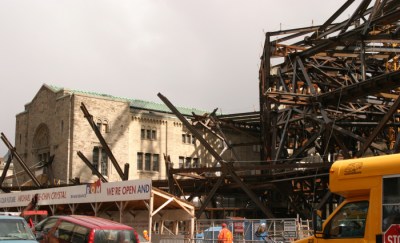 In some respects being away from Toronto allowed me to see the city with fresh eyes. I had repressed most of the dilapidation that large portions of Toronto neighbourhoods suffer from. London’s old 1960’s tower blocks always stand out to me, and yet Toronto has plenty of similar buildings. The three floor Victorian house that makes up most of Toronto’s residential housing are still spacious in comparison to London’s offering, but they are often in a poor state of repair in comparison. On the other hand Toronto still seems to provide a much safer environment than London, and for the same money you can obtain a far better standard of living.
In some respects being away from Toronto allowed me to see the city with fresh eyes. I had repressed most of the dilapidation that large portions of Toronto neighbourhoods suffer from. London’s old 1960’s tower blocks always stand out to me, and yet Toronto has plenty of similar buildings. The three floor Victorian house that makes up most of Toronto’s residential housing are still spacious in comparison to London’s offering, but they are often in a poor state of repair in comparison. On the other hand Toronto still seems to provide a much safer environment than London, and for the same money you can obtain a far better standard of living.
I found it amusing to hear Edge 102’s advert for their “history of new music” show. Here I was packing my bag before returning to the UK, and the Edge was still advertising a “new music” program that was running five years ago when I first visited Toronto.
The extension of the ROM is well underway now, presenting a striking image for anyone happening upon it. My first impression of the construction focused not on the structure, but rather the sheer quantity of steel beams that are involved. The effect is like one of a diseased growth, the steel oozing out of the court yard and partially consuming the original building. The beams themselves are extremely dense, managing to create a sense of claustrophobia in what is not yet a sealed space.
None of my photos really summarise the overall feeling of the extension, but they do capture certain aspects of it fairly well. Today’s picture brings the idea of the, very literal, overshadowing of the old building’s facade.
April 17th, 2005
London Marathon
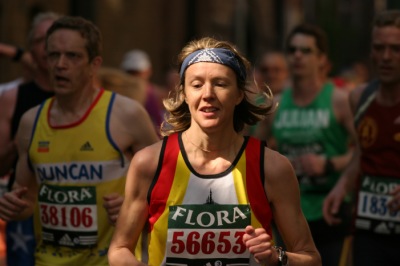 Given that the route of this year’s London Marathon included a stretch down Narrow Street, I could hardly avoid watching for a while. All I had to do was get out of bed in time, which I managed with about fifteen minutes to spare before Paula Radcliffe went hurtling past. The weather couldn’t have been much better for the event, blue skies and a warm sun but still chilly in the shade. Our neighbourhood attracted a fair number of visitors, far more people were taking advantage of the building’s square than I’ve seen before.
Given that the route of this year’s London Marathon included a stretch down Narrow Street, I could hardly avoid watching for a while. All I had to do was get out of bed in time, which I managed with about fifteen minutes to spare before Paula Radcliffe went hurtling past. The weather couldn’t have been much better for the event, blue skies and a warm sun but still chilly in the shade. Our neighbourhood attracted a fair number of visitors, far more people were taking advantage of the building’s square than I’ve seen before.
I took a few photos, but with the crowds of spectators and closely packed runners it was hard to get good shots. The real challenge, however, was my ailing camera batteries. They used to last for long periods of time, at least a full afternoon, and between two of them I could easily spend the whole day taking pictures. For some reason the last few charges haven’t lasted long at all, often failing within an hour of use. I’ve started the process of reconditioning them to see whether I can get more out of them, but if they don’t improve I’ll be forced to buy some replacements.
April 5th, 2005
Borough Market
Two weeks back I visited the Borough Market with Shana and aquitaineq. I should point out that we visited the weekly fine food market, rather than the daily wholesale market that runs throughout the early hours of the morning and finishes around 9am. Getting up early enough to photograph the wholesale market could be rewarding however, so I may try at some point.
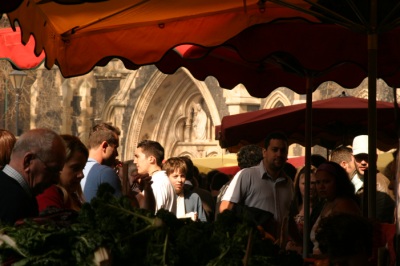 The location of the market creates a peculiar space. The market nestles partly under London Bridge, partly in it’s own buildings, and partly in the open air next to Southwark Cathedral. The result is a scene of many layers, allowing a photographer to combine the grey industrial surroundings, the cheerful market colours and the warmth of the cathedral in many different ways. My attempts to capture a scene with the rail bridge, the market and the cathedral didn’t work out as well as I hoped they would, meriting another trip soon. I did have more luck with some of my other shots, although more attempts could undoubtedly produce better results.
The location of the market creates a peculiar space. The market nestles partly under London Bridge, partly in it’s own buildings, and partly in the open air next to Southwark Cathedral. The result is a scene of many layers, allowing a photographer to combine the grey industrial surroundings, the cheerful market colours and the warmth of the cathedral in many different ways. My attempts to capture a scene with the rail bridge, the market and the cathedral didn’t work out as well as I hoped they would, meriting another trip soon. I did have more luck with some of my other shots, although more attempts could undoubtedly produce better results.
Today brought the formal announcement of the general election on the 5th of May. While the date of the election has been predicted for many months now, the official announcement does usher in two major changes. Firstly TV news now has to cover every obscure political party you’d almost forgotten existed (Greens, that welsh party with the funny name, SNP, UKIP) and more importantly Peter Snow’s swingometer is back on the telly. While I’d like to do my bit to save Britain from ID cards and nasty anti-terrorism legislation, I now live in a constituency so safe for Labour they couldn’t loose it if they actively tried. Instead the best I can hope for from my vote is a pleasant walk to wherever the nearest polling station is.
March 20th, 2005
Wildlife Photographer of the Year
On Saturday we went to see the Wildlife Photographer of the Year 2004 exhibition at The Natural History Museum. The photos themselves are, as you would expect, of a very high standard indeed. While a very small number had faults that I found visually annoying, the rest were of the level of quality that I would love my photos to one day reach.
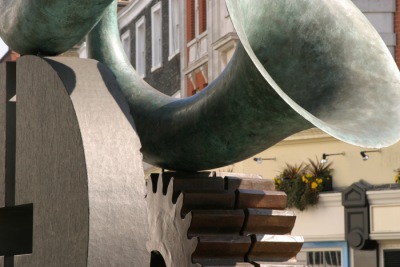 Of the several photos that stuck in my mind I think my favourite is the “Bald eagles in mid-winter” by Klaus Nigge. The image on the competitions website doesn’t do the photo justice of course, but close examination does bring out the feel of the picture. Unlike most of the other entries in the category of Animals in Their Environment, this picture gives the environment the larger visual impact. The combination of snow, blue-grey seas, dark rocks and close horizon bring a real sense of cold and isolation. It’s only after this sense has been set that the birds themselves become interesting.
Of the several photos that stuck in my mind I think my favourite is the “Bald eagles in mid-winter” by Klaus Nigge. The image on the competitions website doesn’t do the photo justice of course, but close examination does bring out the feel of the picture. Unlike most of the other entries in the category of Animals in Their Environment, this picture gives the environment the larger visual impact. The combination of snow, blue-grey seas, dark rocks and close horizon bring a real sense of cold and isolation. It’s only after this sense has been set that the birds themselves become interesting.
One disappointment with the exhibition is the quality of the curating. The room needed to be much larger for the number of pictures that were being shown. Photos were back-lit, an excellent way to show them, but facing one another. As a result you could rarely see the whole photo without the interference of a reflection from the picture on the opposite wall, and some pictures couldn’t be seen at all. In addition one of the light units had failed; staff had enough time to print out a specially labelled apology, but not actually change the light bulb. Finally the room was slightly over heated from the large number of visitors shuffling from picture to picture.
—
The photo is part of a sculpture between South Kensington tube station and The Natural History Museum.
March 14th, 2005
Markup
Shorthand markup languages, which are intended to make writing HTML easier, are very popular. At least they are popular if you measure popularity by the sheer number of them available. Personally I think they are a poor solution to the problem for making the authoring of HTML easy.
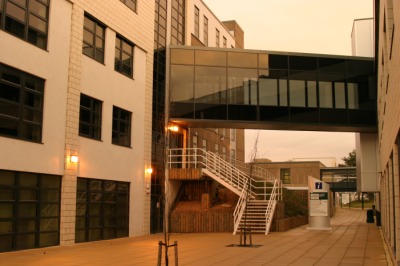 Markup languages are mainly popular because programmers are lazy, and creating a graphical interface for editing HTML is difficult. Web browsers supply a built in “rich text editor” that allows simple HTML to be authored, but the subset of HTML that they provide authoring for, is usually different to the subset that the user would like to use. For example most of the rich text editors let you change the colour of the text, but not the title of a hyper-link.
Markup languages are mainly popular because programmers are lazy, and creating a graphical interface for editing HTML is difficult. Web browsers supply a built in “rich text editor” that allows simple HTML to be authored, but the subset of HTML that they provide authoring for, is usually different to the subset that the user would like to use. For example most of the rich text editors let you change the colour of the text, but not the title of a hyper-link.
I recently stumbled across the Markdown markup language. It seems to strike the right balance between useful facilities (such as automatic escaping of HTML) and obscure hard to remember syntax (such as that used by Textile).
There is an initial Python implementation of Markdown, and I’ve written a plugin for PubTal so I can use it. I don’t think it’s yet ready for real use because the Python Markdown library isn’t finished and has some strange debug code left in. Once the Markdown library is up to quality I’ll probably ship the plugin with PubTal.
On the SimpleTAL front there is an ongoing effort to add I18N support. I’m not entirely sure I like the specification for I18N support in TAL. It seems to be trying to solve too large a problem, and consequently gets it wrong. Unless I can come up with a better workable alternative however, the implementation of I18N is probably the best way of supporting multiple language use in a single SimpleTAL template.
Software
The full list of my published Software
Email: colin at owlfish.com
